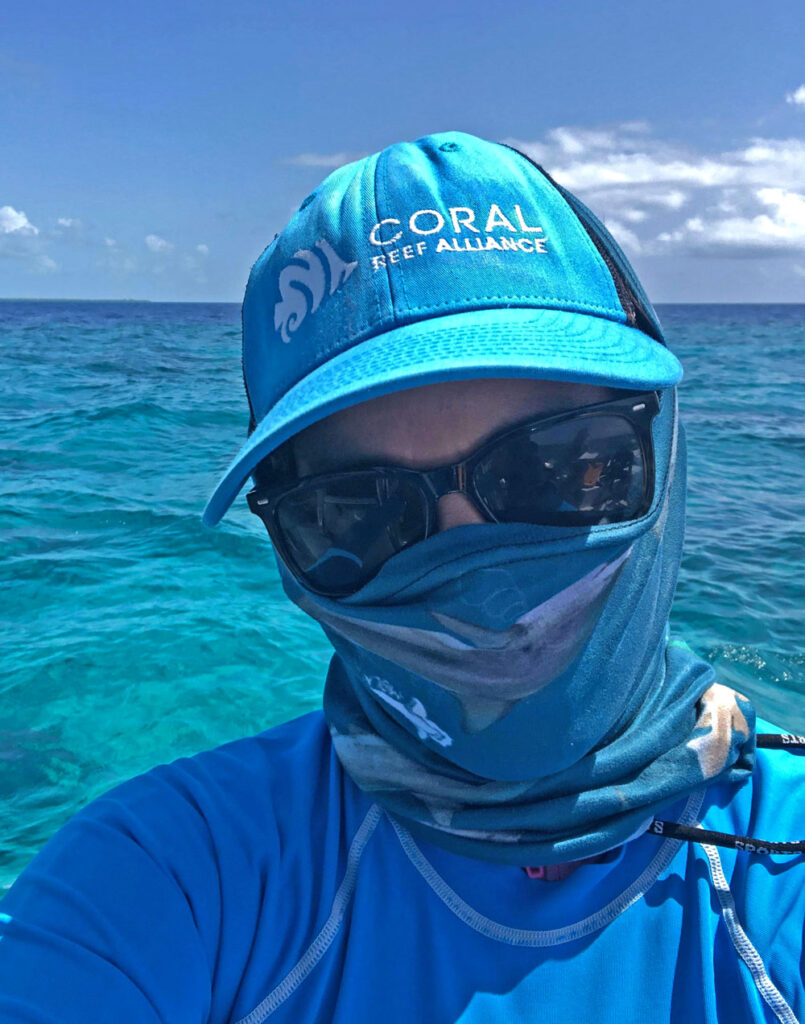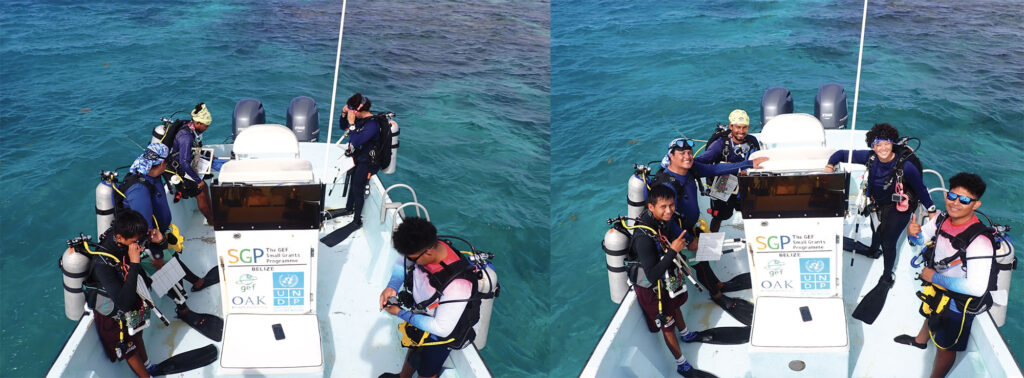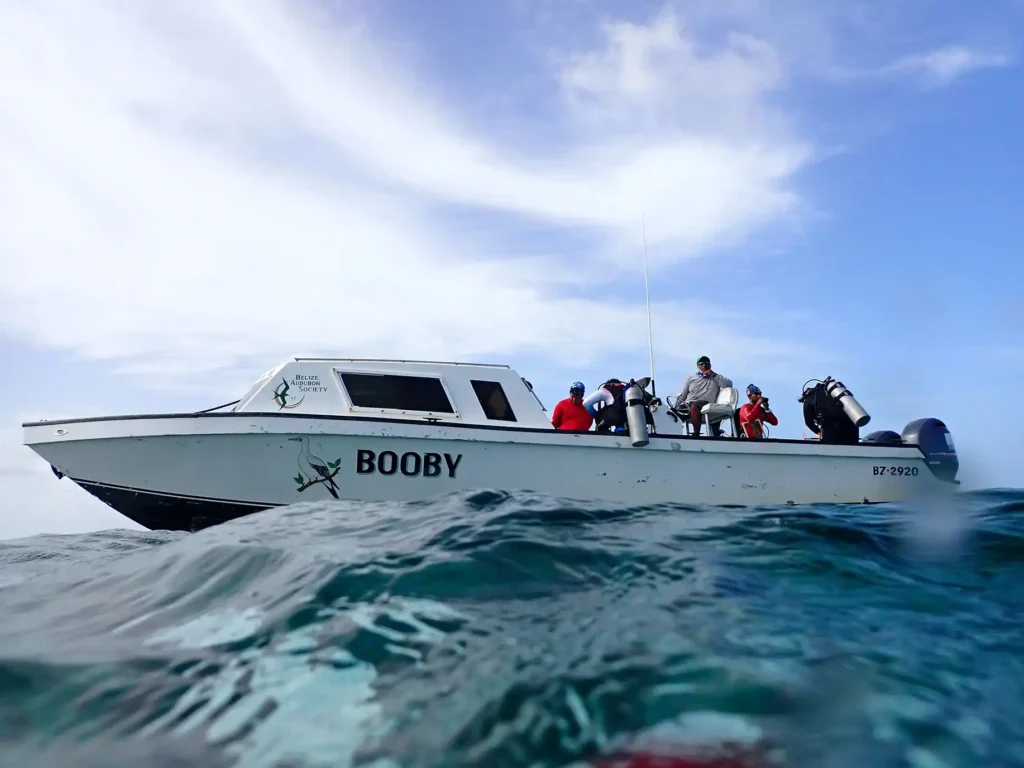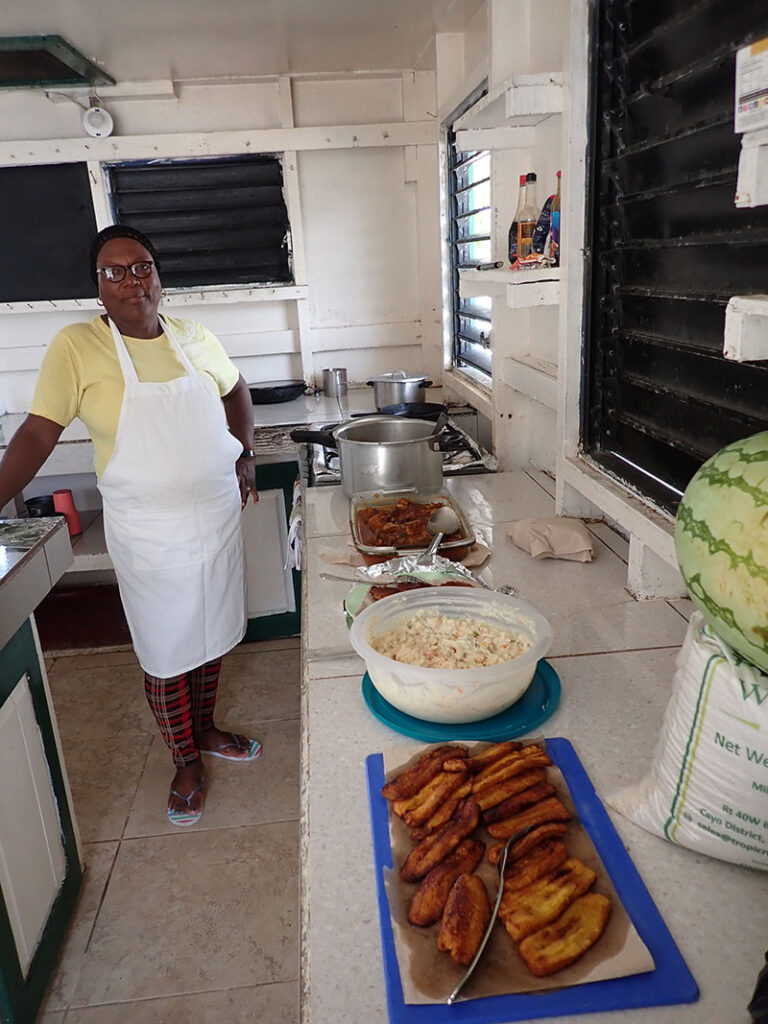If you think coral reef monitoring is just swimming with fish and snapping pretty underwater pictures, well, you’re only half right. Behind the scenes, it’s an adventure that starts with spreadsheets and ends with salt-crusted gear and happy exhaustion.
I was extremely lucky to meet Gabriela Ugarte from Belize Audubon Society (BAS), who was leading a coral reef monitoring expedition and let me join to explore Lighthouse Reef Atoll in Belize, home to the magnificent Blue Hole. The awesome team at BAS co-manages this World Heritage Site, which has been protected since 1996 and is home to stunning coral formations, nesting sea turtles, flocks of seabirds—in particular the red-footed booby—and of course, vibrant fish communities.
So what does a day of monitoring actually look like? Let me walk you through it!
🧾 Before the First Splash Comes Prep, Permits, and Planning
Long before fins hit water, there’s a mountain of prep work that keeps the monitoring boat running smoothly. First, we scout out a weather window with calm seas, because nothing derails a dive day faster than stormy conditions. Then we check team availability and confirm logistics with the boat captain. It’s like coordinating a small field army.
We also put in budget requests (because fuel, field food, and air tanks aren’t free!) and make sure paperwork is squared away: research permits, liability forms, emergency contacts, safety plans, and proof of dive insurance are all packed (sometimes literally) in our dry bags.
If we’re heading to remote locations, like this week’s camp at Lighthouse Reef, we also check for food preferences (I’m vegetarian!), medication or food allergies, and confirm who’s cooking. And let me tell you, having a camp cook in the field is a luxury. Warm meals after a long dive day? Yes, please.
Then comes the fun part: checklists. So many checklists. One for gear. One for safety. One for food. This may not sound glamorous, but it’s what keeps us safe, fed, and productive once we’re out in the blue.
☕ The Day Begins (With Coffee, Obviously)
The alarm goes off early, because reef windows don’t wait. First up? Coffee. Non-negotiable.
Then comes a huge checklist, starting with the gear check: transect lines and quadrats, meter tapes, slates, pencils, GPS, datasheets, dive computers, charged cameras, tanks, first aid kit, oxygen, extra everything (because it’s always better to be prepared). We prep everything like we’re going into battle. Because, in a way, we are… against currents, gear tangles, and the race against time to collect good data underwater.
Also, we check in with the boat captain, coordinate with the fish survey team, and communicate across teams. Is the weather window holding? Is everyone on board, feeling well (literally and figuratively)? We also select our sites—deep sites first, shallow ones later—aiming for three a day, following all dive protocols.
Did we bring a copy of the final permit from the park authority? Protected areas require research permits and authorization—no skipping that step!

🌞 Suited Up and Sun-Proofed
Once logistics are locked, it’s time to suit up. No sunscreen for me—it’s all about maximum coverage: rash guard, hat, buff, sunglasses, and two stainless steel water bottles (because warm water just doesn’t hit the same). We clip on all our gear with caribbeaners—we’re basically reef-themed Christmas trees—and pack healthy snacks: fruit, seed mixes, anything that doesn’t melt or sink.

🌊 Into the Blue
We load up the boat and head out to the site. We usually monitor coral reef health—basically, we assess the benthic composition and condition of the reef to track changes over time. The benthic team notes what’s growing on the sea floor (corals, algae, sponges), counts key herbivores such as urchins, and checks for conch and sea cucumbers. The coral team identifies coral species, measures them, and checks for mortality and any signs of bleaching or disease. Meanwhile, our fish team is off counting parrotfish, groupers, and the occasional quadrat-hogging barracuda.

It’s a quiet kind of teamwork. Underwater, no talking—just OK👌🏽 signals, nods, and the shared rhythm of a monitoring dive.

📝 After the Dive: Snacks, Shade, and Data
Back on the boat, we rehydrate (cue double water bottles!) and dive into our snack stash. On land, then comes one of the most important steps: data input. Before we forget who saw what and where, we record everything. It’s not glamorous and often the least fun part of monitoring, but it’s the backbone of long-term reef protection.

On this occasion, we had marvelous cooking from Mrs. Irene. She made my day with the delicious Belizean food, shared recipes, stories, and laughs!
🌅 End of Day: Salt, Sand, and a Sunset
After rinsing gear, checking data, and maybe sneaking in a quick snorkel just for fun, we settle in to admire the magic of Lighthouse Reef. It’s moments like these that remind us why we do what we do. Coral reef monitoring isn’t just a job—it’s our way of keeping watch over one of the most beautiful and vulnerable ecosystems on the planet. So next time you see a photo of a coral reef, remember: it likely came with a checklist, a lot of prep, and a whole lot of love (and snacks).
Sometimes we also have bittersweet endings. And sometimes when you think you got everything covered, there is something else. Unfortunately, my monitoring trip to Lighthouse reef was cut short due to an ear infection. 🙁 But I had an amazing time while it lasted, and I can’t wait to come back!
Written by Andrea Rivera Sosa, marine biologist, vegetarian, and proud supporter of the Belize Audubon Society.



